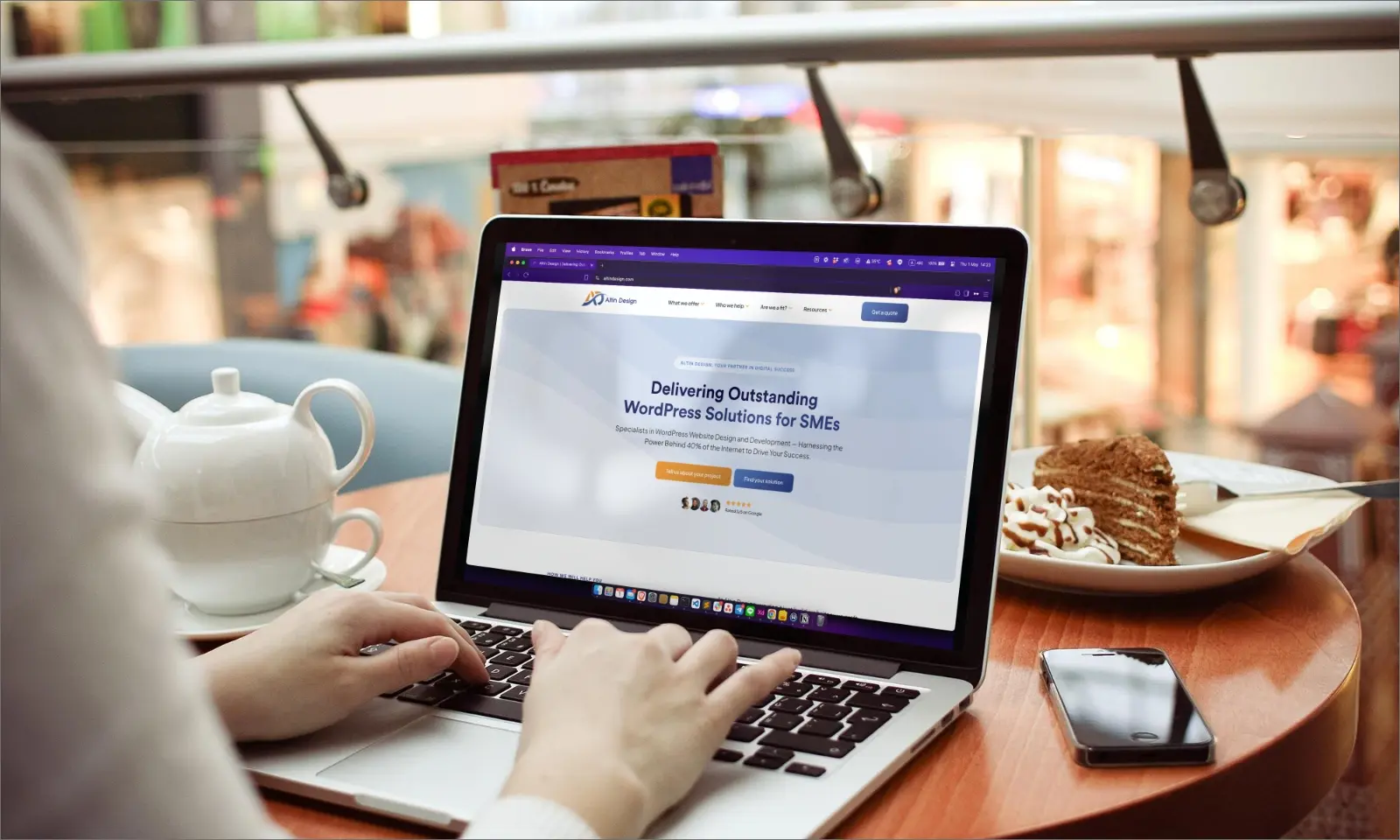Designing a Contact Us page is one of the most crucial steps in building a website—yet, it is often overlooked. Many designers, when launching a new site, tend to focus the bulk of their attention on the homepage layout, site navigation, content creation, or implementing SEO best practices. As a result, the Contact Us page is frequently neglected. However, this page deserves the same level of precision and visibility as the homepage.
But why is the Contact Us page so important, and what kind of information should it include?
A well-designed Contact Us page plays a significant role in building user trust. It reassures visitors about the website’s authenticity and legitimacy. As the name suggests, this section provides essential contact details and various ways for users to get in touch with the site’s support or business team. Visitors typically expect to find phone numbers, social media links, email addresses, and sometimes even physical addresses on this page.
So, how do you design a professional Contact Us page?
In the following article from Altin Design, we will take an in-depth look at the core principles of Contact Us page design. You’ll learn everything you need to know to create a clear, user-friendly, and trustworthy point of contact for your website. Stay with us.
What Is a Contact Us Page and Where Should It Be Placed?
Before diving into the essential principles and key points of designing a Contact Us page, it’s important to first understand what this page represents and where it should be positioned on a website.
The Contact Us page is one of the most crucial sections of any website. It offers visitors a clear view of a brand’s identity and acts as a transparent bridge between the business and its audience. This page essentially serves as the main communication channel, allowing users to access important information such as phone numbers, social media links, email addresses, the city name, office location, and business hours.
The primary purpose of a Contact Us page is to establish the legitimacy and credibility of a website or business. By providing clear and accessible contact information, you reassure your audience that they are engaging with a real, trustworthy entity — and that they can easily get in touch with you directly through the listed channels.
In terms of placement, the Contact Us page typically appears in two prominent locations on a website — areas that most users are already familiar with. The majority of websites place this page in the footer section, which is a common destination for visitors seeking contact information quickly. Users often scroll to the bottom of a website expecting to find essential business details there.
However, limiting the Contact Us page to the footer alone is not enough. To ensure maximum visibility and ease of access, it should also be included in the website’s main navigation menu. With a single click, users should be able to reach the page from any part of the site.
In conclusion, for optimal accessibility and user experience, it is best practice to include the Contact Us page in both the footer and the main menu. This dual placement guarantees that all users — regardless of how they navigate the site — can easily find and access your contact information when needed.
The Importance of a Well-Designed “Contact Us” Page
Why Is a Contact Page Crucial for Your Website?
One question you may be asking is: why is the “Contact Us” page so important, and why should it be included on your website? Reputable websites—whether e-commerce, news, educational, or sports-related—all feature a contact page as a key component to establish trust with their audience.
By clearly displaying contact information and communication channels, you make it easier for users to trust you. When visitors see that they can reach out to you directly, they are more likely to engage with your content or make a purchase. On the other hand, a website that lacks basic contact details—such as an email address, business location, or social media links—will struggle to earn user confidence. Displaying these details is a critical trust signal, and without them, most users will likely leave your site.
Consider an online store that showcases a wide range of products, complete with detailed descriptions and high-quality images—but it lacks a “Contact Us” page. There’s no email address, phone number, or form to reach out for support or product inquiries. Would you, as a potential customer, feel comfortable making a purchase from this site? Chances are, the answer is no. Without any means of communication, the website leaves visitors feeling uncertain and unsupported.
A missing contact page not only raises concerns about the legitimacy of the site but also limits the user’s ability to ask questions, report issues, or seek help. As a result, many potential customers will abandon the site, and valuable sales opportunities will be lost.
In conclusion, a thoughtfully designed “Contact Us” page is one of the most effective tools for building trust with your audience. It plays a crucial role in improving user experience and directly impacts your sales and conversion rates. For any serious business or organization, it is not just an optional feature—it’s an essential one.
What Options Should a "Contact Us" Page Include?
The “Contact Us” page typically features various options that may differ depending on the type and approach of each website. However, when designing this page for your own website, it’s best to include certain key details to, as the saying goes, kill two birds with one stone: both building trust with your audience and offering a clear path for them to reach out and learn more.
Here are the most essential elements that should be included on a “Contact Us” page:
1. Phone Number
2. Company Address
3. Message Submission Form
The message submission form is another key component of the “Contact Us” page, offering two major advantages for your website. Typically, the form includes fields such as first name, last name, phone number, email address, and a message box for users to ask questions or report issues. Visitors can choose to fill it out and send their inquiries directly to you. This not only gives you access to valuable user data, but also creates a direct communication channel for sending promotional messages, newsletters, and other updates.
Moreover, the form enables you to respond to customer inquiries even outside of business hours—ensuring timely follow-ups and a higher level of service for your audience.
However, it’s important to note that certain personal details—like phone numbers—should not be mandatory. Many users are reluctant to share their phone numbers, and requiring such information may discourage them from submitting the form altogether. Features such as real-time notifications when a message is received and prompt replies can also significantly boost user engagement and trust.
4. Email Address
5. Social Media Links
Adding links to your social media platforms—such as Instagram, Facebook, Telegram, WhatsApp, or LinkedIn—is another essential aspect of a well-rounded “Contact Us” page. These platforms offer users a more convenient and familiar way to get in touch with you. Moreover, when visitors explore your social profiles on platforms like Instagram, they gain deeper insight into your brand’s values, activities, and areas of expertise, increasing the likelihood that they will follow and stay connected with you.
By considering these key elements, you can design a standard and highly functional “Contact Us” page that serves as an effective tool for building trust, increasing website traffic, and ultimately boosting sales.
Best Practices for Designing a "Contact Us" Page
Keep the Design Simple
Use Contrasting Colors
Colors have powerful psychological effects and can significantly influence user behavior. For this reason, choosing the right color palette is vital when designing your contact page. Ideally, contrasting colors should be used to highlight important elements and capture the user’s attention.
For example:
- Use black for the background,
- White for the text,
- And yellow to highlight key options or call-to-action buttons.
Using a Readable Font
Choosing the right font is another key principle in designing a “Contact Us” page. The selected font should prioritize two essential features: simplicity and readability.
Some websites attempt to attract users’ attention by using complex or decorative fonts on their contact page. While this may catch the eye at first glance, it often fails to deliver long-term results. Why? Because visitors might struggle to find the information they need, leading to frustration and ultimately discouraging them from reaching out.
To avoid this, it’s advisable to stick with the same font used throughout the rest of your website—as long as it’s clear and easy to read. Consistency in typography not only enhances the visual flow but also improves the user experience.
Reviewing Contact Page Examples
Analyzing well-designed contact pages from other websites can also provide you with fresh and creative ideas. By drawing inspiration from these examples, you can craft a contact page that stands out and aligns with your brand identity.
- Adding a brief summary of your business or company history
- Using a unique background image
- Featuring a team photo
- Incorporating humor or light-hearted copywriting
These elements can contribute to a more engaging and impactful design. Before diving into the design process, take time to explore the Contact Us pages of both local and international websites. Identify layouts and features you find compelling and adapt them to your own brand’s voice and audience needs.
Final Thoughts
By keeping these points in mind, you can create a user-friendly and visually appealing Contact Us page—one that earns a prominent spot in both your main navigation and footer menu.
The order of elements on this page is equally important. Arrange content based on priority, placing the most essential information at the top to help users quickly find what they’re looking for.
Ultimately, the Contact Us page should never be an afterthought. Its design plays a crucial role in user engagement and business communication. When in doubt, consult with experienced web designers or UX specialists to ensure your contact page serves its purpose effectively and professionally.








